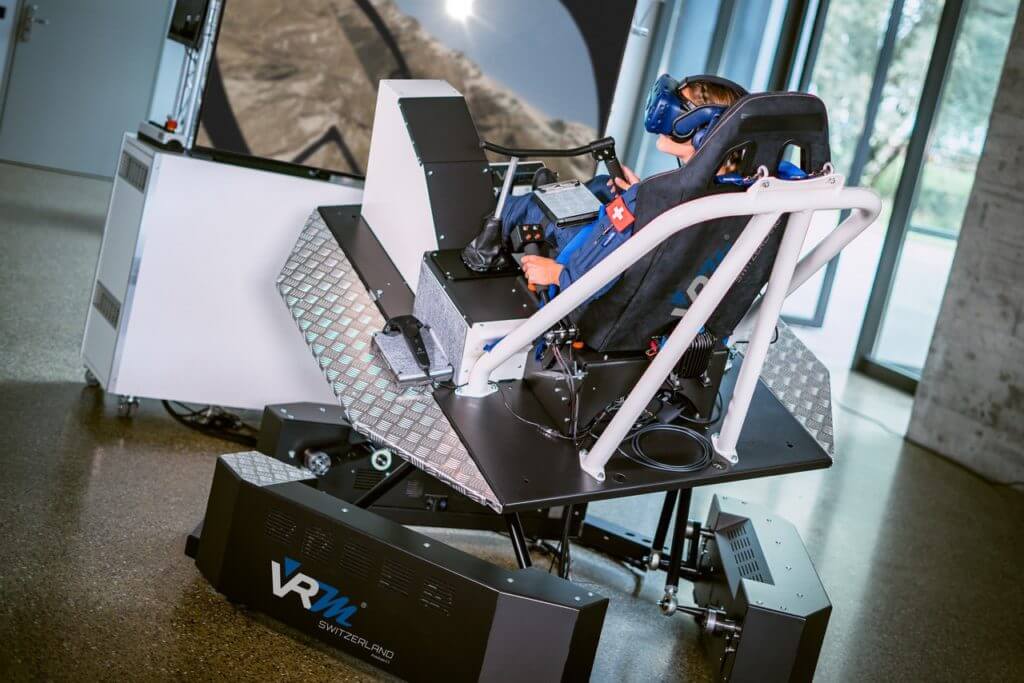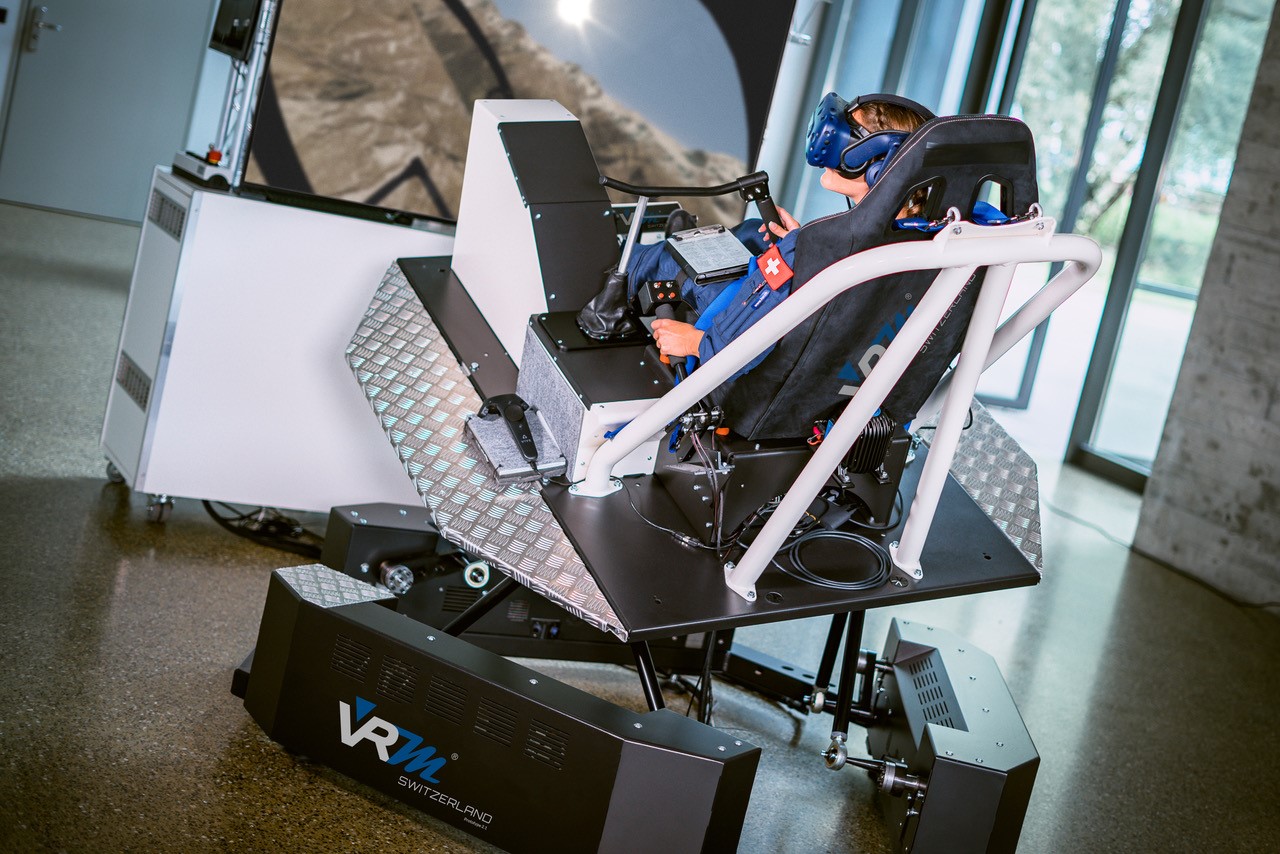VRMotion, a Swiss startup offering a virtual reality (VR) flight simulator, is working with the European Aviation Safety Agency (EASA) on new standards for such training devices while the company’s launch customers have begun finding uses for the lower-cost technology.

VRMotion’s product makes the most of VR to make full flight simulators affordable for small operators of single-piston engine helicopters. Meanwhile, it is retaining full-motion capabilities for maximum realism and to eventually gain formal approvals from civil aviation authorities.
VR goggles replace the conventional dome for image display. The system’s weight is thus drastically cut to 200 kilograms (440 pounds), from 10 metric tons, according to VRMotion. In turn, the motion platform can be actuated more dynamically to increase the degree of realism – the angular velocity is up to five times higher, said VRMotion CEO Fabi Riesen.
Installing the simulator no longer requires a vast hangar. Riesen would not quote a price, however.
In front of the student pilot, the cockpit’s shape, with display contours, buttons and knobs (not shown on the photo), adds the haptic aspect and enables interaction via the VR system.
The house-developed “pose tracking” system enables avatar animation following the pilot’s movements. Key points on the body are tracked in real time with enough precision to accurately handle the controls, avionics and other cockpit systems, said Riesen.
Force feedback on the controls and the motion platform is said to be precise enough to make the pilot feel vibration from main rotor blades and interaction with uneven ground.
Many helicopter accidents happen with small light aircraft, and Riesen hopes his simulator will help solve this industry-wide problem.
Bern, Switzerland-based flying school Mountainflyers has incorporated a VRMotion device in its pilot training program. “Students can practice special flight maneuvers and dangerous situations on the ground without any risk, which gives them the necessary routine that will make them safer in the air,” said CEO Christoph Graf.
A student pilot can hover during his or her first flight after eight hours on the simulator, according to Riesen. A private pilot license is obtained in an average 60 flight hours, he said. The required minimum is 45 hours. “The remaining average 15 hours could be spent on the simulator,” he suggested.
Mountainflyers has tried a new business model – unlimited access to the simulator, at no additional cost, until the students obtain their private helicopter license.
VRMotion’s device is available for the Robinson R22 and the H125 (for simulated sling load operations). Next in line is the Kopter SH09.
EASA is in the process of creating rules to integrate new technologies, such as VR, on simulators. They could, potentially, allow training credits for using the device.
However, current training rules stipulate, for example, that the instructor and the student must be in the same cabinet. The potential solution to meet this requirement might be virtual proximity. The instructor could be on a different platform, seeing the student’s avatar in VR goggles.
In the future, features such as eye tracking may be added. This would enable the instructor to give the student exhaustive feedback after a simulated approach.










Can’t see it ever happening due to motion sickness that affects 8 out of 10 people in a Heli VR Sim.
Many trained heli pilots like myself can’t stand VR, awful in a helicopter!
Bruce, thank you very much for your feedback. This topic has encouraged us to do better. We are looking forward to welcoming you at our booth at HAI HELI-EXPO 2020, please convince yourself.